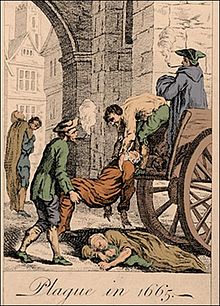Pestilence, ordure, filth: Surely London, 1604 gives hope to all poor megacities
It was on this day, 410 years ago, that King James (the First of England and the Sixth of Scotland) rode into a bedecked London for what we would probably today call his coronation street party. Though he’d been crowned the previous year, it took till March 1604 for his capital to be safe from the plague.
It’s worth remembering this if you live in a poor megacity like Port au Prince, where there is just shadow sanitation, as Jonathan Katz memorably described in a recent New Yorker piece.
Back in the 17th century, London was a megacity – Europe’s third largest – but a cesspit none the less, as Bryan Appleyard gravely wrote in The Sunday Times. “The streets were filthy and the people, convinced it was most hygienic never to get wet or to take your clothes off, stank.
Mr Appleyard was writing in 2012 on the occasion of a new three-part series for the BBC by James Shapiro, a Columbia university literature professor. It was titled ‘The King and the Playwright: A Jacobean History’.
The Jacobean period was an important time for Britain in all sorts of ways, but often passed over as the uninteresting sandwich filling between the Tudors and the civil war.
Crucial yes but a cesspit too. In laying his cloak over that puddle for the Queen, Walter Raleigh was being more practical than gallant. There was, in London at the time, “filth and ordure and awfulness,” says Oxford English don Emma Smith.
That was then. Four centuries on, Thames’ water straight from the tap is perfectly drinkable. And fine-tasting. This must give hope of a sort to cities like Port au Prince.



